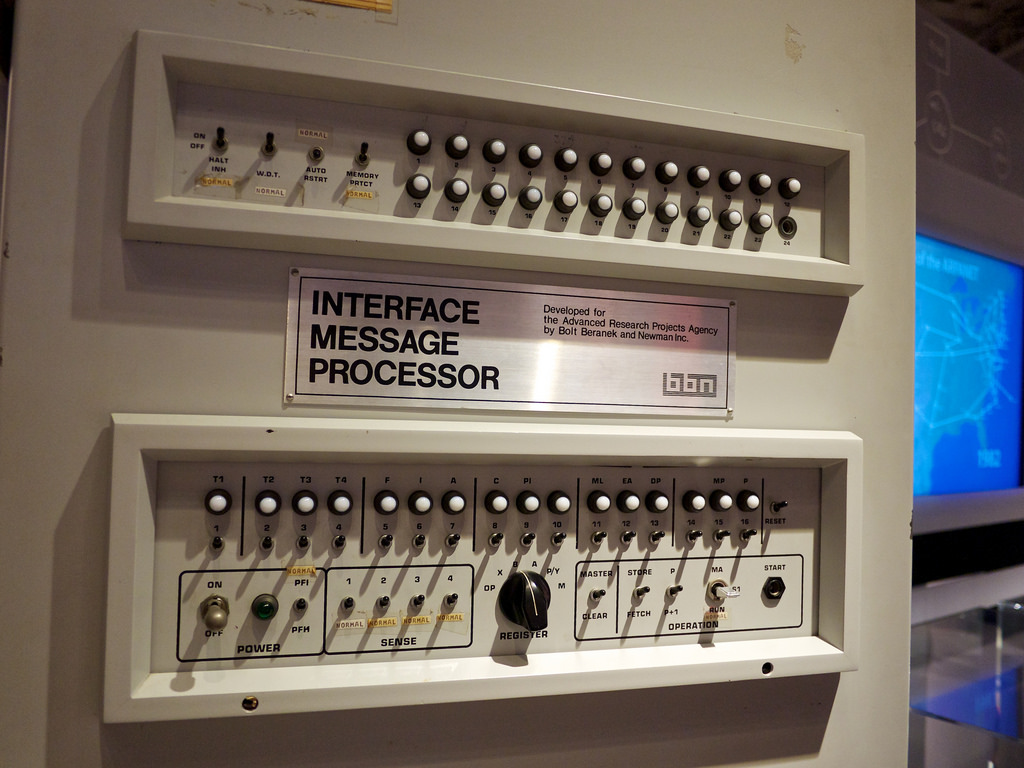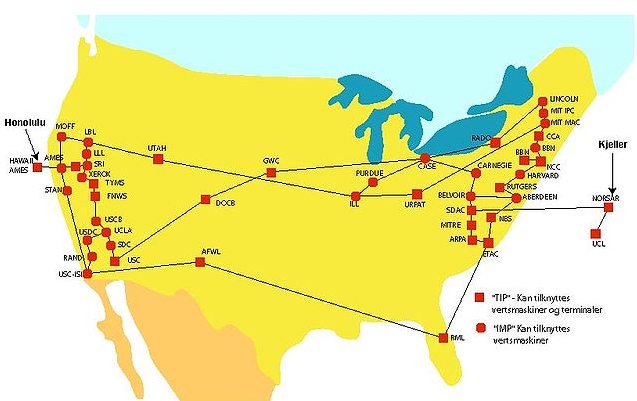The Birth of the Internet
by Andy Boyd
Today, who is that on the line? The University of Houston presents this series about the machines that make our civilization run, and the people whose ingenuity created them.
The 1960s found a handful of computer engineers asking a relatively simple question. If I can pick up the phone and call a colleague in another part of the country, why can't a computer do the same thing? Why can't computers communicate over the phone?
The technology was within reach, and the benefits were clear if, at the time, not altogether compelling. For example, rather than sit in Boston and wait for a research paper to arrive in the mail from Los Angeles, the paper could be transmitted in seconds. Useful, but not earth shattering.
Ideas are wonderful, but making them come to life requires time, effort, and money. And in the 1960s, that money came from ARPA, the U.S. Advanced Research Project Agency. ARPA was formed by president Eisenhower in response to the launch of the Soviet satellite Sputnik, and throughout its history ARPA has had close ties with the U.S. military. In fact, the agency's name has changed back and forth from ARPA to DARPA, with the additional D standing for Defense. ARPA funded the computer-to-computer communication experiment due to its engineering merit, but there's no denying there were defense implications. If the military could rely on independent but interconnected computers, it would make military computer systems less vulnerable to attack.

One of the key ingredients in allowing computers to talk is to define an agreed upon set of protocols by which they communicate - a structured set of rules for sharing information.
Another important ingredient is the way messages get from one location to another. Employing the model used for telephone calls at the time would require finding an open line then tying it up from one end to the other for the duration of the call. That's not an efficient use of resources given the way computers talk - they're a lot more flexible than we are. So engineers developed a technique that works more like the postal system. Create a message, address it, and simply hand it over for delivery. It was quite a departure from the status quo and wasn't met with open arms. But when the details were worked out it proved just the right solution.

Specialized hardware for handling communication between computers linked via the ARPANET - the forerunner of modern day routers
By any measure, ARPANET was one of the most successful research projects ever undertaken. While it never grew to more than a few hundred interconnected computers, the protocols and message routing techniques by which these computers communicated lives on as the internet. At the most basic level, the internet is nothing more than computers world over that communicate according to an agreed upon set of protocols. There's no internet-central, so to speak. And the protocols that tie the computers together and make the internet the internet came to life as part of the 1960s government research project, ARPANET.

The ARPANET - 1974 Photo Credit: Wikimedia
I'm Andy Boyd at the University of Houston, where we're interested in the way inventive minds work.
(Theme music)
More details about the method of routing messages can be found in the reference below on packet switching. It should also be noted that very similar work was transpiring in the United Kingdom at the time ARPANET was being developed.
ARPANET. From the Wikipedia website: https://en.wikipedia.org/wiki/ARPANET. Accessed September 14, 2017.
DARPA. From the Wikipedia website: https://en.wikipedia.org/wiki/DARPA. Accessed September 14, 2017.
Interface Message Processor. From the Wikipedia website: https://en.wikipedia.org/wiki/Interface_Message_Processor. Accessed September 14, 2017.
Packet Switching. From the Wikipedia website: https://en.wikipedia.org/wiki/Packet_switching. Accessed September 14, 2017.